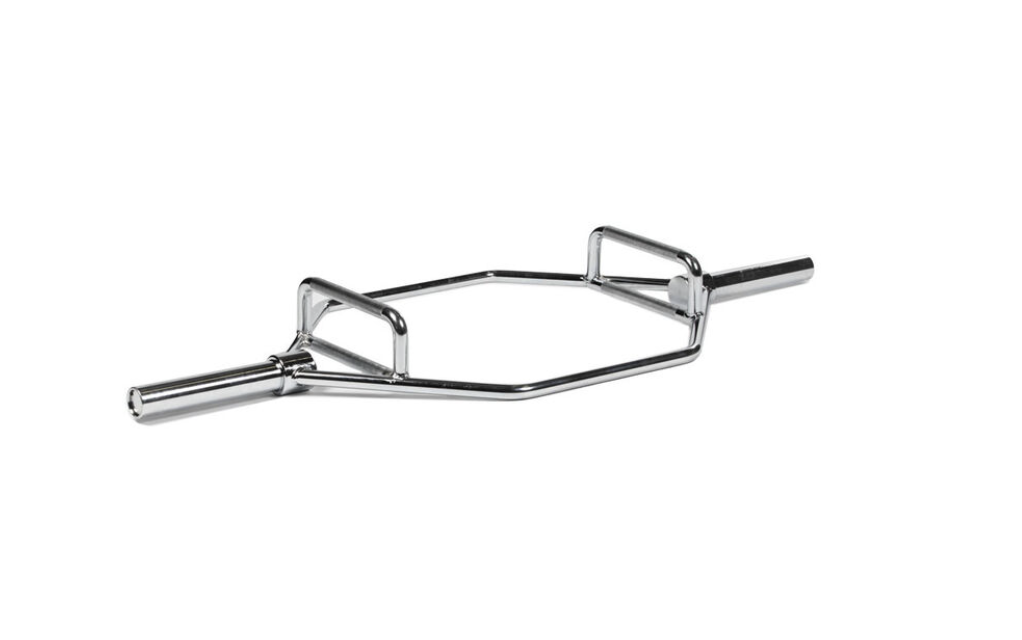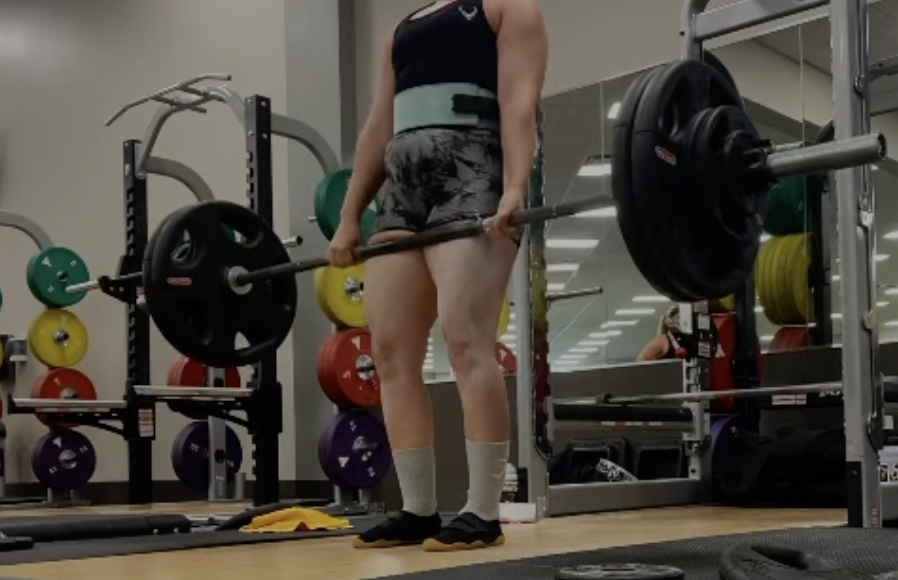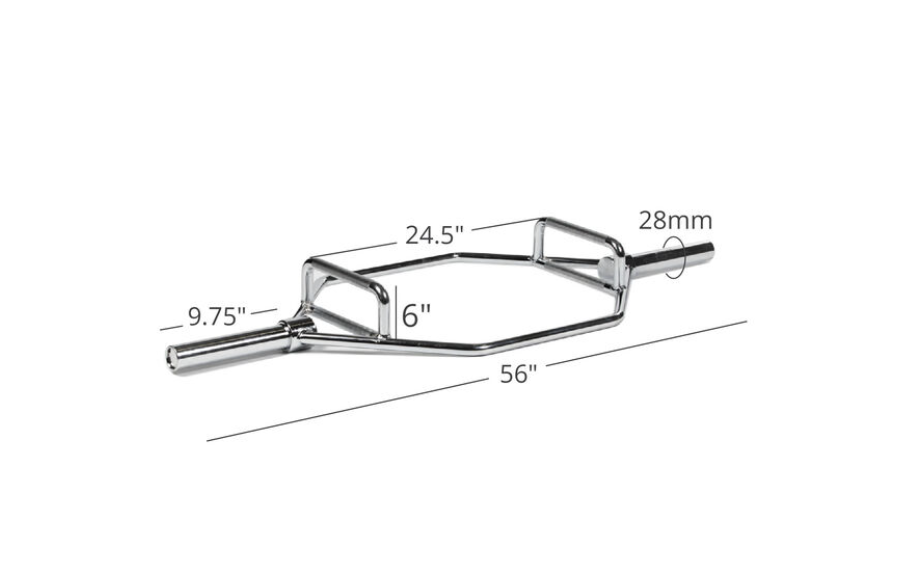Hex Bar Deadlifts: The Ultimate Strength Builder
Written by The Boostcamp Editors
Why You Should Try Hex Bar Deadlifts
Are you tired of doing the same old conventional deadlifts at the gym? If you're looking for a new way to challenge your body and take your training routine to the next level, it's time to try hex bar deadlifts. The hex bar is a unique piece of equipment, different from the standard deadlift bar, that allows you to perform the exercise in a different way than with a traditional straight barbell, and it can be beneficial for bodybuilding or strength sports such as powerlifting. Let's explore what the hex bar is, how it differs from straight barbell deadlifts, and why you should incorporate it into your training routine. Let's also cover the advantages of hex bar deadlifts, including reducing lower back strain and improving quadriceps activation.
Whether you're a beginner or an advanced lifter, there's something for everyone in this comprehensive guide to hex bar deadlifts, so let's begin.
Understanding the Hex Bar

The hex bar, also known as the trap bar, is a versatile piece of equipment commonly used in strength training. With its hexagonal shape and neutral grip handles, the hex bar offers several advantages over traditional straight bar deadlifts. By utilizing a neutral grip, the hex bar reduces strain on the wrists and shoulders, making it a better option for those with mobility issues or injury concerns. Additionally, hex bar deadlifts specifically target the posterior chain muscles, including the trapezius muscles, latissimus dorsi, and back extensors. This makes it an ideal posterior chain exercise for a wide range of lifters that are looking to improve the size and strength in their backside, from beginners to advanced.
History of the Hex Bar
In the 1980s, powerlifter Al Gerard invented the hex bar as a safer alternative to the traditional straight barbell deadlift. This innovative piece of equipment gained popularity among strength athletes and fitness enthusiasts due to its effectiveness and reduced risk of injury. Today, the hex bar is widely used in strength training programs around the world. Its versatility and benefits have made it a staple in the strength training community, becoming a trusty sidekick for athletes of all levels. The hex bar has truly become a rite of passage in the lifting life of many, offering a better option that suits a variety of body types and fitness goals.
Design and Functionality of the Hex Bar
The hex bar, with its unique hexagonal shape and two parallel handles in the center, offers a design that promotes proper form and an upright posture during lifts. Its weight plates positioned on the sides create a balanced center of gravity. This versatile piece of equipment can be used for a variety of exercises, including deadlifts, shrugs, and farmer carries. With its functionality and user-friendly design, the hex bar appeals to lifters of all levels, making it a popular choice of gym equipment in the lifting community.
Hex Bar Deadlifts vs. Straight Barbell Deadlifts

Hex bar deadlifts and straight barbell deadlifts are both effective exercises for building strength and muscle. However, they differ in terms of starting position, stress on the lower back, muscle engagement, and suitability for individuals with certain conditions. Hex bar deadlifts offer a more natural and biomechanically advantageous starting position, reducing the risk of lower back strain. They engage a broader range of muscle groups compared to straight barbell deadlifts, which primarily target the erector spinae muscles. Hex bar deadlifts can be a better option for those with lower back issues or medical conditions. Ultimately, both exercises have their advantages and can be incorporated into a well-rounded training program.
Comparing Technique and Form
When it comes to comparing technique and form, hex bar deadlifts offer some distinct advantages over straight barbell deadlifts. The unique design of the hex bar allows for a more upright posture and neutral spine, reducing the risk of lower back strain. Additionally, the hand position on the hex bar provides a comfortable and secure grip during the lift. Proper technique and form are crucial to fully maximize the benefits of hex bar deadlifts, as they require technical proficiency to ensure optimal muscle activation and power output. Whether you're a beginner or an advanced lifter, hex bar deadlifts are a great option for improving strength and overall fitness.
Risk and Injury Factors
When it comes to risk and injury factors, hex bar deadlifts offer a safer option compared to straight barbell deadlifts. The design and mechanics of the hex bar reduce the stress on the lower back, making it a better option for individuals with a history of lower back pain. However, it's important to note that improper form and excessive weight can still pose a risk of injury. That's why it's crucial to start with lighter loads and focus on proper technique rather than going as heavy as you can and hitting a one rep max. Consulting with a qualified fitness professional can also help minimize the risk of injury and ensure correct execution.
Advantages of Hex Bar Deadlifts
When it comes to hex bar deadlifts, there are several advantages that make them worth incorporating into your workout routine. First and foremost, they minimize lower back strain while targeting the posterior chain muscles such as the glutes, back extensors, and hamstrings which makes them fit in with your leg day routine or even your back days. Additionally, hex bar deadlifts enhance quadriceps activation compared to straight barbell deadlifts, and although they are not an exercise like squats or a hack squat when it comes to leg activation, hex bar deadlifts are still a great option for building stronger legs.
The hex bar's neutral grip and ergonomic design make it a comfortable and efficient tool for strength training. With their ability to amplify power output, hex bar deadlifts are also ideal for explosive movements, making them great for athletes. In short, incorporating hex bar deadlifts into your routine provides a well-rounded lower body exercise with numerous benefits.
Minimizing Lower Back Strain
One of the key benefits of hex bar deadlifts is the ability to minimize lower back strain, which may be the main downfall of the traditional deadlifts. By distributing the weight evenly, this exercise reduces the strain on the lower back. The hex bar's design and mechanics further contribute to this by allowing for a more upright posture and decreasing the load on the lumbar spine.
When performed with proper form and technique, hex bar deadlifts can help minimize the risk of lower back injuries. This makes it an excellent option for individuals looking to strengthen their legs without putting excessive stress on the lower back. Prioritizing a strong and stable core can also further reduce the strain on the lower back during hex bar deadlifts.
Enhancing Quadriceps Activation
Enhancing quadriceps activation is one of the key benefits of incorporating hex bar deadlifts into your training routine. Unlike straight barbell deadlifts, hex bar deadlifts place a greater emphasis on the activation of quadriceps muscles. The design and mechanics of the hex bar allow for a more upright posture and increased knee flexion, which activates the quadriceps to a greater extent. This can help develop stronger and more defined quadriceps. To maximize the benefits, it's important to maintain proper technique and form throughout the exercise and gradually increase the weight and intensity over time.
Amplifying Power Output
Hex bar deadlifts, a potent exercise, can boost explosive movements and power output. The hex bar's design allows for efficient force transfer from the lower body to the ground, resulting in greater power production. Athletes engaged in sports requiring explosive movements, like sprinting and jumping, can benefit from incorporating hex bar deadlifts into their training program. By maintaining proper technique and progressively increasing weight and intensity, power output can be maximized. Consulting with a qualified strength and conditioning coach can offer guidance on incorporating hex bar deadlifts into a sport-specific training regimen.
Learning Hex Bar Deadlifts

Mastering the proper technique for hex bar deadlifts is essential to avoid injury. This exercise engages multiple muscle groups, making it a compound exercise, providing a comprehensive workout for your legs and core. Hex bar deadlifts offer a safer alternative to traditional barbell deadlifts, making it accessible to a wider range of people. You can also explore different variations of hex bar deadlifts to add variety to your routine and keep your lifting life exciting. Incorporating this posterior chain exercise into your training program can bring potential benefits and make you a stronger and more well-rounded lifter.
Step-by-step Guide for Beginners
To begin, position yourself in the center of the hex bar with your feet shoulder-width apart. Grasp the handles using a neutral grip, with your palms facing inward. Engage your core and hinge at the hips, slowly lowering the bar to mid-shin level while maintaining a straight back. Drive through your heels, lifting the bar in a controlled manner until you reach a standing position. Lower the bar back down, focusing on maintaining proper form throughout the exercise. Remember to always prioritize proper technique to avoid any potential injuries.
Common Mistakes and How to Avoid Them
To get the most out of your hex bar deadlifts, it's crucial to avoid common mistakes that can hinder your progress and potentially lead to injury. One common mistake is rounding your back during the lift, which puts strain on your lower back. Instead, focus on maintaining a neutral spine throughout the movement, avoiding excessive arching or rounding. Another mistake to avoid is relying solely on your arms and shoulders to lift the bar; make sure to engage your legs and hips for maximum power. Additionally, don't rush the movement. Instead, take your time and focus on maintaining proper technique and control. If you're unsure about your form, consider working with a trainer or experienced lifter who can provide guidance and ensure that you're performing the exercise correctly.
Who Can Benefit from Hex Bar Deadlifts?
Hex bar deadlifts offer benefits for lifters of all levels, from beginners to advanced. They are particularly useful for athletes in rehabilitation, as they provide a safe way to improve strength and mobility. Individuals with a history of lower back pain may also find hex bar deadlifts more comfortable. Additionally, hex bar deadlifts are effective for developing the posterior chain and enhancing overall athletic performance.
Novice Lifters
If you're new to strength training, hex bar deadlifts are a fantastic option for building strength and developing your muscles and strength. The unique design of the hex bar provides a stable and comfortable starting position, making it perfect for beginners. With a focus on proper technique, hex bar deadlifts can help you strengthen your legs and core while minimizing the risk of injury. Incorporating hex bar deadlifts into your routine can be a rite of passage for novice lifters, giving you the potential benefits of a posterior chain exercise without the added strain on your back.
Athletes in Rehabilitation
If you're an athlete recovering from injuries, hex bar deadlifts can be a safer and effective option for your rehabilitation. The neutral grip and centered center of gravity in hex bar deadlifts work to reduce stress on the lower back, making it a better option for those with back issues. Hex bar deadlifts can also be modified based on individual needs and medical conditions, providing flexibility for athletes in rehab. Additionally, the posterior chain activation provided by hex bar deadlifts can help improve strength and stability during the recovery process.
Is Hex Bar Deadlift Suitable for Your Fitness Goals?
If you're looking to strengthen your muscles and improve overall strength, incorporating hex bar deadlifts into your fitness routine can be a great option. And if you are looking for a good program, check out the Boostcamp App! There are over 50 free programs for you to choose from, our you can create your own to help plan workouts and track progress/
Whether you're a powerlifter, a bodybuilder, or simply someone who enjoys going to the gym, hex bar deadlifts can help you achieve your fitness goals. Consider consulting with a trainer to determine if this exercise is suitable for you.
Finding a Good Workout Program
Now to find good programs for incorporating the hex bar deadlift amongst other lifts, check out the free Boostcamp App. You can find tons of different workout routines that will truly push you to the limit, and they are made by renowned evidence-based coaches. Boostcamp also lets you create your own custom routines and log your progress, which is great for tracking your progress and making linear progression.
To maximize your gains and simplify your fitness journey, consider using Boostcamp, the last lifting app you'll ever need. Boostcamp helps you track your progress, offers customizable training programs, and provides expert guidance to ensure you get the most out of your chosen workout program whether it's linear push pull legs or upper lower or whatever you choose. Start making the most of your workouts and download Boostcamp today!
Conclusion
To sum it up, hex bar deadlifts offer numerous advantages over traditional straight barbell deadlifts. They minimize lower back strain, enhance quadriceps activation, and amplify power output. Whether you're a novice lifter or an athlete in rehabilitation, incorporating hex bar deadlifts into your routine can be highly beneficial. Make sure to start with a step-by-step guide for beginners and avoid common mistakes to ensure proper form and technique. Additionally, you can customize your hex bar deadlifts by trying variations like high handle vs. low handle deadlifts. Consider your fitness goals and determine if hex bar deadlifts align with them. So why not give hex bar deadlifts a try and experience the benefits for yourself?
Be sure to follow Boostcamp on Instagram and subscribe on YouTube!

Header image courtesy of Masterclass
Other images courtesy of Titan Fitness

